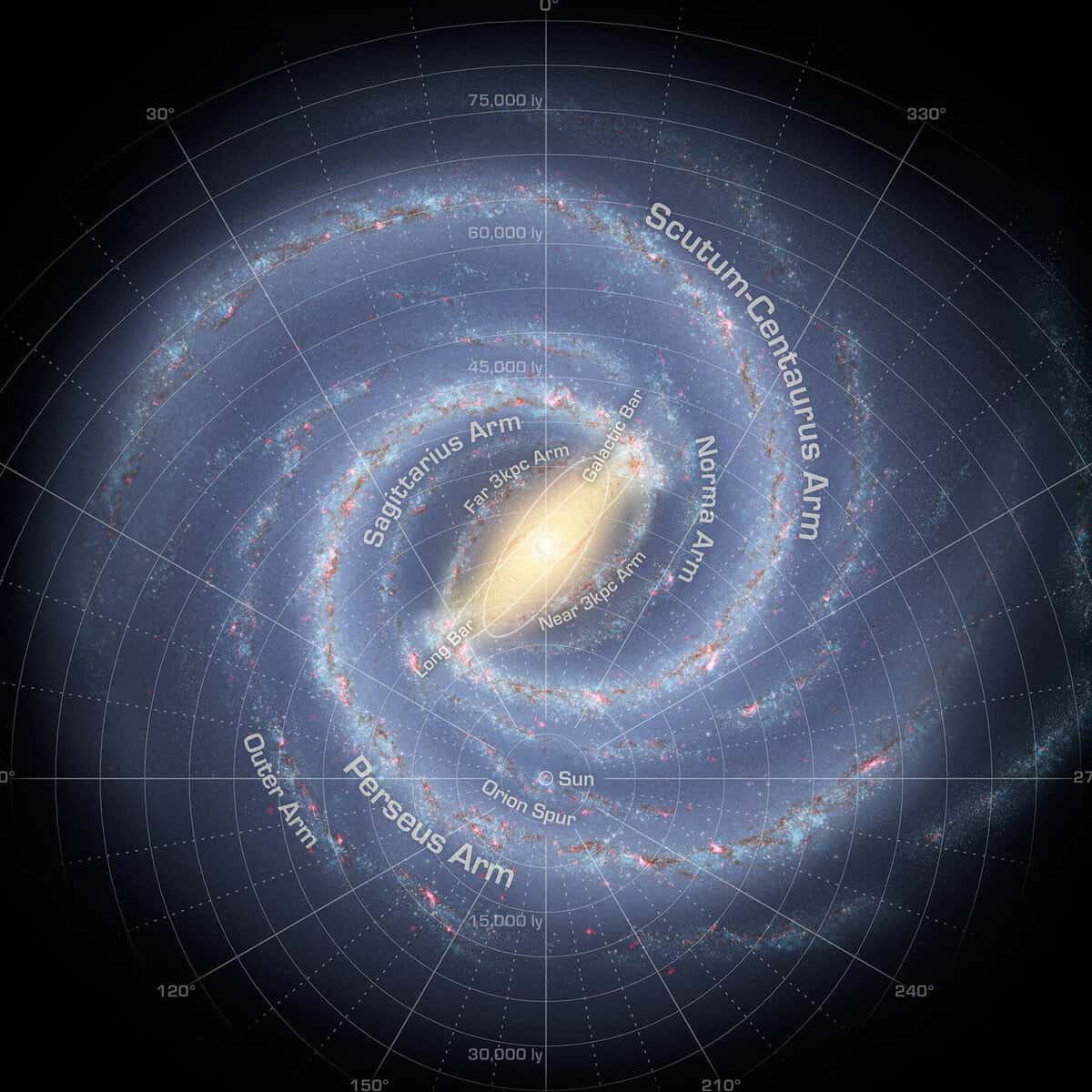In the modern era, with the abundance of artificial lighting in cities, urban dwellers are deprived of the opportunity to witness the breathtaking sight of the Milky Way. This celestial phenomenon, visible only during certain times of the year, can only be observed far away from densely populated areas. In our particular region, it reaches its peak splendor in the month of August. During the final month of summer, the Milky Way gracefully ascends above the Earth, taking the form of a colossal celestial arch. This ethereal, indistinct band of light appears more concentrated and luminous in the direction of Scorpius and Sagittarius, while becoming more diffuse and faint near the constellations of Andromeda and Perseus.
A captivating enigma
The Milky Way is an extraordinary phenomenon, shrouded in centuries-old intrigue. Throughout history, it has been referred to by various names in legends and myths across different cultures. Its mesmerizing radiance has been likened to a mystical Star Bridge, a celestial pathway to paradise, and a divine Heavenly River brimming with ethereal milk. Across civilizations, the Milky Way has been revered as a sacred entity, inspiring the construction of grand temples in its honor.
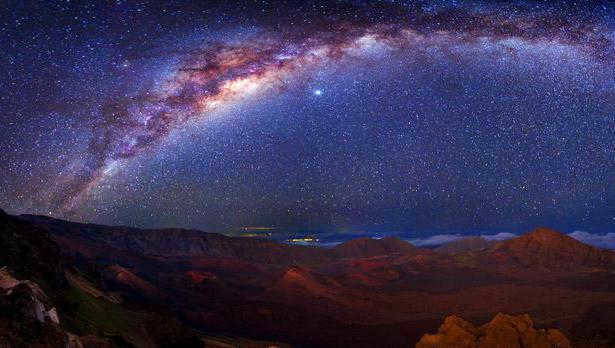
Not many people are aware that our galaxy, the Milky Way, holds significant meaning in the ancient cultures. In the past, it was believed that the Milky Way served as the axis of the Universe or the World Tree, with the stars growing on its branches. This belief influenced the tradition of decorating Christmas trees at the beginning of each year, as the earthly tree symbolized the ever-fruitful tree of the heavens. This ritual was a way to seek the gods’ favor and ensure a bountiful harvest. Our ancestors held the Milky Way in such high regard due to its immense significance.
Scientific Hypotheses
What exactly is the Milky Way? The origins of understanding this phenomenon date back nearly 2000 years. Even Plato referred to it as a band of light connecting the celestial hemispheres. In contrast, Anaxagoras and Demoxides argued that the Milky Way (whatever its color may be) is a type of starry illumination. It serves as a captivating decoration in the night sky. Aristotle posited that the Milky Way is a distinct luminous glow arising from the presence of gaseous vapors in our planet’s atmosphere, particularly those near the moon.
There were numerous other hypotheses as well. For instance, the Roman astronomer Marcus Manilius proposed that the Milky Way is a collection of small celestial luminaries. He came closest to the truth, although he couldn’t substantiate his ideas during a time when the sky was only observed with the naked eye. All ancient scholars believed that the Milky Way was a part of the solar system.
Galileo’s groundbreaking revelation
In 1610, Galileo Galilei made an incredible discovery that unveiled the enigmatic secrets of the Milky Way. This groundbreaking revelation came about when Galileo invented and employed the world’s first telescope. Through this remarkable instrument, the renowned scientist observed that the Milky Way is, in fact, a genuine assemblage of stars. To the naked eye, these stars blend together into a seamless, softly twinkling ribbon. Galileo even succeeded in elucidating the irregularities within the structure of this celestial band.
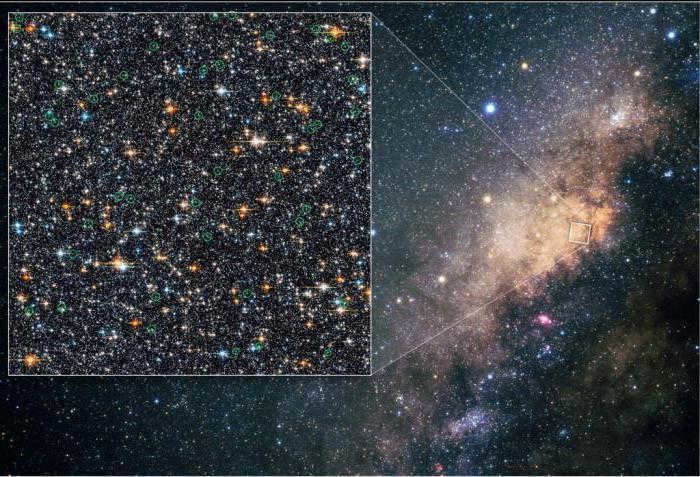
The celestial phenomenon known as the Milky Way is not only comprised of star clusters but also contains dark clouds. The coexistence of these two elements results in the formation of a breathtaking spectacle in the night sky.
Discovery by William Herschel
In the 18th century, the exploration of the Milky Way was carried on by William Herschel. This talented musician and composer also dedicated his time to crafting telescopes and delving into the study of celestial bodies. Herschel’s most significant achievement was the revelation of the Great Plan of the Universe. Through his telescope, he observed and tallied the number of planets scattered across different regions of the sky. His diligent research led him to the conclusion that the Milky Way is akin to a stellar archipelago, housing our Sun. Herschel even sketched out a visual representation of his discovery, portraying the star system as a millstone with an elongated and irregular shape. Within this ring-shaped structure, our Sun resided. This depiction of our Galaxy persisted among scientists until the early 20th century.
The arrangement of galaxies
With the advancement of science, the capabilities of astronomical telescopes have significantly improved. Consequently, the arrangement of the observed galaxies has become increasingly evident. Surprisingly, not all galaxies share the same structure. In fact, there are irregular galaxies that lack any form of symmetry.
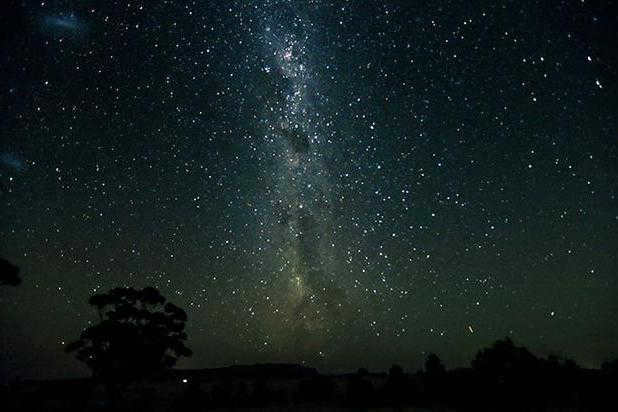
There were also other types of galaxies, such as elliptical and spiral galaxies. However, when it comes to our galaxy, the Milky Way, determining its structure is quite challenging from within. Nonetheless, scientists have managed to find an answer to this question. We now have a clear understanding of what the Milky Way is. Researchers have defined it as a disk with an inner core.
General characteristics
The Milky Way is a spiral galaxy that is connected to other galaxies through gravitational forces.
It is estimated that the Milky Way has been in existence for over thirteen billion years. During this time, approximately 400 billion constellations and stars, as well as over a thousand large gas nebulae, clusters, and clouds, have formed within the galaxy.
The shape of the Milky Way can be clearly seen on the map of the Universe. It appears as a disk with a diameter of 100,000 light-years (equivalent to ten trillion kilometers). The thickness of the star cluster is 15,000 light-years, and the depth is approximately 8,000 light-years.
Is it possible to calculate the mass of the Milky Way? This is a challenging task as determining its mass is not possible. The mass of dark matter, which does not interact with electromagnetic radiation, is difficult to determine. Consequently, astronomers are unable to definitively answer this question. However, there are approximate calculations that suggest the weight of the Galaxy falls within the range of 500 to 3000 billion solar masses.
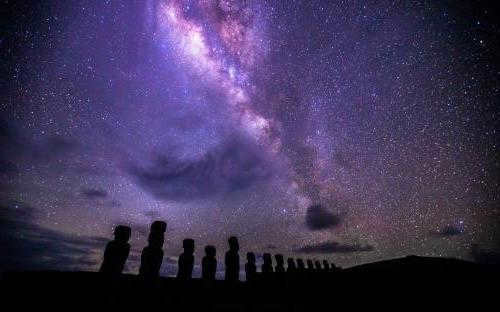
Similar to all celestial bodies, the Milky Way undergoes revolutions on its axis while traversing the cosmos. Astronomers observe the irregular and even chaotic movement of our Galaxy, which can be attributed to the differing speeds, shapes, and types of orbits of its constituent star systems and nebulae.
What components comprise the Milky Way? These include the core, lintels, disk, spiral arms, and corona. Let us delve deeper into each of them.
This region of the Milky Way can be found in the constellation Sagittarius. Positioned at its core is a source emitting non-thermal radiation, with a scorching temperature of approximately ten million degrees Celsius. At the heart of this specific part of the Milky Way lies a structure known as a bulge, consisting of a string of ancient stars that follow an elongated path. The majority of these celestial bodies are approaching the end of their life cycles.
Located at the center of the Milky Way’s core is a supermassive black hole. This area of space, which possesses a mass equivalent to that of three million suns, exhibits an incredibly powerful gravitational force. Revolving around it is another, smaller black hole. This system generates such an intense gravitational field that neighboring constellations and stars are compelled to traverse highly unusual trajectories.
The Milky Way’s center boasts additional characteristics. One notable feature is the presence of a massive star cluster, with stars packed together hundreds of times closer than those found on the outer edges of the galaxy.
Interestingly, astronomers have observed a bright glow when examining the nuclei of other galaxies. However, this phenomenon is not observed in the Milky Way. Some scientists have even proposed that our Galaxy lacks a nucleus. Nevertheless, it has been determined that spiral nebulae contain dark layers consisting of interstellar dust and gas clusters. These dark clouds also exist within the Milky Way, obscuring the view of the core. If these massive formations did not obstruct our view, we would be able to witness a radiant ellipsoid-shaped nucleus, larger in size than a hundred moons.
In order to address this inquiry, advancements in modern telescopes have played a crucial role. These advanced telescopes have the capability to operate within specific ranges of the electromagnetic spectrum. By utilizing this cutting-edge technology, scientists have been able to observe the core of the Milky Way, surpassing the hindrance of the dust shield.
The Keystone
Spanning across the central region of the Milky Way, the Keystone measures an astounding 27 thousand light-years in size. Comprised of an impressive 22 million red stars, this formation boasts an impressive age. Surrounding the Keystone is a ring of gas, which notably contains a high concentration of molecular oxygen. These findings strongly suggest that the Keystone of the Milky Way serves as a prime location for prolific star formation.
Disk
The disk is the physical structure of the Milky Way galaxy, characterized by continuous rotational movement. It is worth noting that the rotational speed of the disk varies depending on its distance from the central core. In the core itself, the rotational speed is zero, while at a distance of two thousand light years from the nucleus, the rotational speed reaches 250 kilometers per hour.
Enveloping the outer side of the Milky Way disk is a layer composed of atomic hydrogen. This layer has a thickness of approximately 1.5 thousand light years.
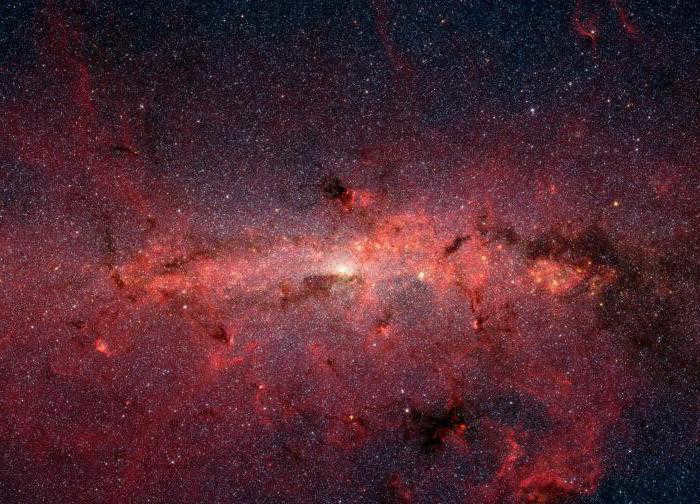

Astronomers have recently detected the existence of compact groups of gas with a temperature of 10,000 degrees on the fringes of the Milky Way. These structures have a thickness that spans thousands of light-years.
Five spiral arms
The Milky Way consists of five spiral arms that are positioned just behind the gas ring. These arms intersect the constellations of Swan and Perseus, Orion and Sagittarius, and Centaurus. The distribution of molecular gas within these arms is not uniform, which leads to deviations in the galaxy’s rotational patterns.
The spiral arms originate from the central region of the Milky Way and are visible to the naked eye as the luminous band known as the Milky Way.
Due to their overlapping nature, the structure of the spiral arms is not easily discernible. Scientists propose that these arms were formed as a result of large-scale waves of rarefaction and compression of interstellar gas within the Milky Way, which propagate from the core towards the galactic disk.
The spherical halo of the Milky Way is known as its corona. It is composed of individual stars and constellations clusters. Additionally, the size of the spherical halo is large enough that it extends beyond the Galaxy’s boundaries by 50 light years.
Within the Milky Way’s corona, one can find low-mass and old stars, as well as dwarf galaxies and hot gas clusters. These various components move in elongated orbits around the nucleus, resulting in a chaotic rotation.
There exists a hypothesis suggesting that the corona formed as a result of the Milky Way absorbing small galaxies. According to astronomers, the age of the halo is estimated to be around twelve billion years.
Stars’ Position
The Milky Way can be observed from any location on Earth during a clear night. Nonetheless, the naked eye can only perceive a fraction of the Galaxy, specifically the stars located within the Orion arm.
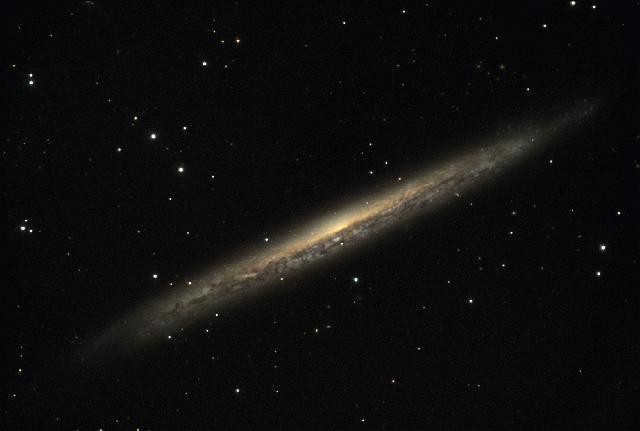
The Milky Way is a constellation that can be best understood by examining a star map. By doing so, it becomes evident that the Sun, which provides light to the Earth, is situated near the disk’s edge. This region is located approximately 26-28 thousand light years away from the galactic nucleus. With a velocity of 240 kilometers per hour, the Sun completes one revolution around the nucleus every 200 million years. Thus, over the course of its existence, the Sun has only circled the nucleus about thirty times while traversing the disk.
Contrary to other planets, our Earth is situated in what is known as a corotational orbit. This orbit is where the rotation speeds of the arms and stars are equal. It is a region that is known for its high levels of radiation. This is the reason why scientists believe that life can only originate on a planet that is located near a low number of stars.
And this planet happens to be our Earth. It is positioned on the outer edge of the galaxy, in the most peaceful region of the galaxy. This is why our planet has not experienced any major catastrophes for billions of years, unlike the frequent occurrences in the rest of the Universe.
Future Predictions
Experts speculate that in the coming years, the Milky Way may potentially collide with other galaxies, with the largest one being the Andromeda galaxy. However, it is important to note that specific details about this event remain elusive due to the lack of information regarding the transverse velocities of extragalactic objects, which are currently beyond the reach of contemporary scientists.
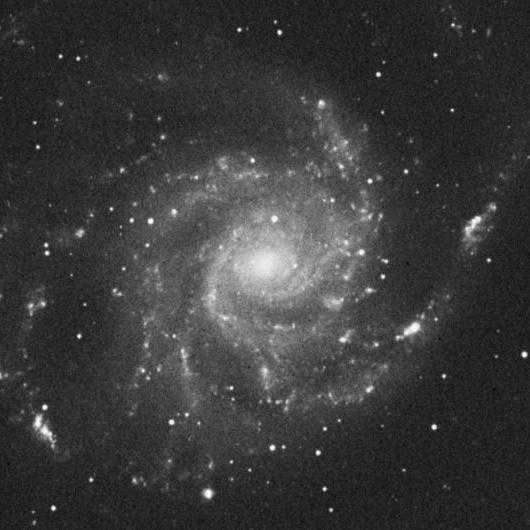
In September 2014, the media published a model of events indicating that it would take approximately four billion years for the Milky Way to merge with the Magellanic Clouds, both the Large and Small ones. Furthermore, it is estimated that in another billion years, the Milky Way itself will become a part of the Andromeda Nebula.
A galaxy is a gravitational cluster consisting of billions of stars, dust, and gas. Galaxies can exist either on their own or in groups.
Each galaxy contains anywhere from several hundred thousand to tens of trillions of stars, as well as interstellar dust and gases. All stars orbit around a central galactic cluster, which is typically massive in size. The distance between neighboring galaxies is usually measured in millions of light years.
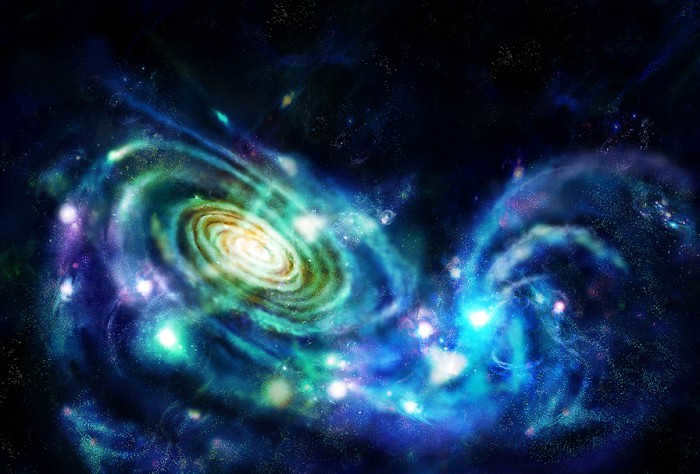

What is the total number of galaxies in the Universe?
In the past, scientists were only able to observe a limited number of galaxies, but with the launch of the Hubble telescope in 1990 and the introduction of several high-powered telescopes on Earth, the number of visible galaxies has increased significantly. According to modern astronomers, there are approximately 100 billion galaxies in the observable part of the Universe alone.
Clusters of Galaxies
Just like celestial bodies, galaxies have the ability to orbit larger cosmic objects. Moreover, they can also come together to form clusters. As an example, there are a total of 14 dwarf galaxies, which are mostly irregular in shape, that orbit around our very own Milky Way galaxy. Additionally, there is a group that includes the Milky Way, along with neighboring galaxies such as the Andromeda Nebula and the Triangle Galaxy, each of which also have their own satellites. Together, these galaxies form what is known as the Local Group, which is a part of the larger Virgo Supergroup.
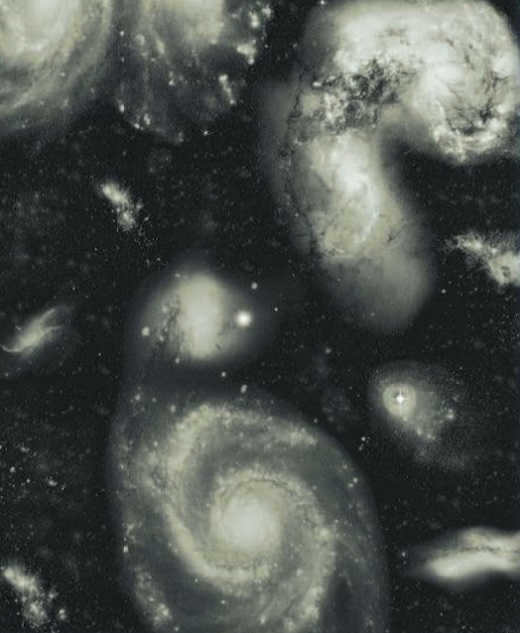
What is the biggest galaxy?
The identity of the largest galaxy is still unknown to scientists. Currently, the largest known galaxies are enormous elliptical (oval-shaped) galaxies situated in the heart of galaxy clusters. Among these, the Central Galaxy, which is part of the Abell 2029 cluster, stands out as one of the largest.
If you observe the night sky with careful attention, you will be able to perceive a hazy white ribbon. According to the ancient Greeks, it resembled a celestial pathway upon which, according to mythology, the goddess Hera spilled her milk. This is why the Greeks referred to this band as the Milky Way, or the Milky Road. What’s particularly intriguing is that the term “galaxy” also derives from the Greek word “galaxias”, meaning “milky”.
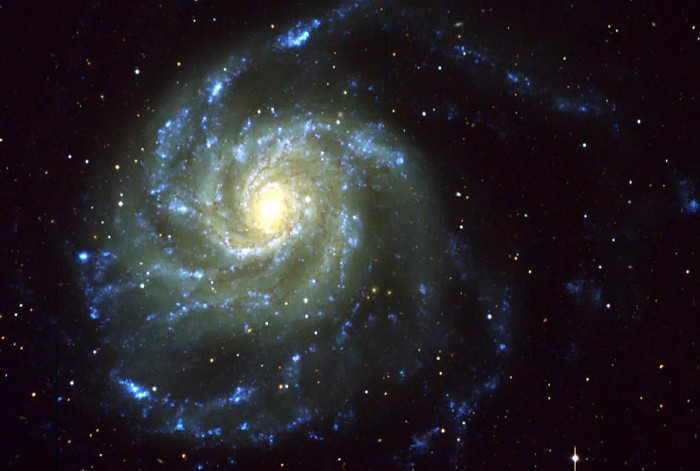
An artist’s interpretation of the Milky Way, our galaxy, as observed by modern telescopes. Our Sun is a modest star located in one of the spiral arms of the galaxy.
The Milky Way is an immense cosmic structure. It requires around 250 million years for the Sun to complete a single orbit around the central region of the Milky Way.
Grouping of Galaxies in the Local Area
Within the vast expanse of space, the Milky Way and its neighboring galaxies form a collection known as the Local Group of galaxies. This unique cluster is referred to as “local” due to its proximity to Earth. Among the members of this group, the closest galaxies to us are Andromeda, as well as the Large and Small Magellanic Clouds. Out of the approximately 30 galactic members in the Local Group, only these three are visible to the naked eye.
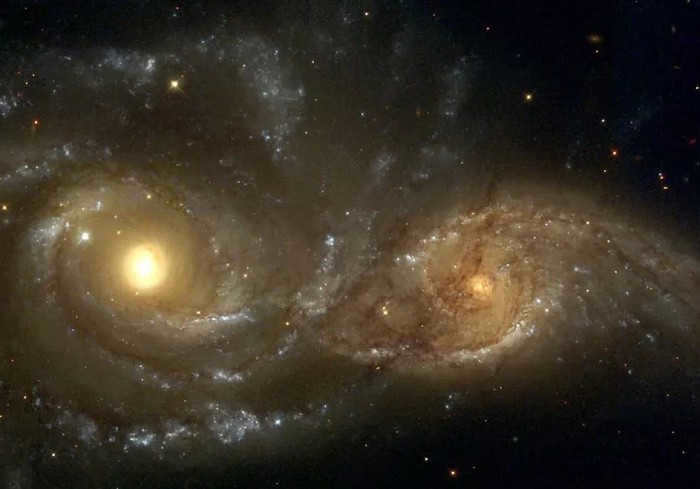

Occasionally, galaxies come together as a result of gravitational forces. However, the stars within these galaxies are separated by vast distances, preventing them from obliterating each other. Presently, our galaxy is heading towards a collision with the Andromeda galaxy. This monumental event is estimated to occur in approximately five billion years, resulting in the formation of a novel elliptical galaxy.
The Local Group contains many galaxies, but the largest one is the Andromeda galaxy. It is surrounded by 18 satellites, making it a prominent member of its group. The Andromeda Nebula, which is part of this galaxy, is estimated to contain at least 1 trillion stars. Despite being located 2 million 500 thousand light years away from Earth, it is visible to the naked eye. This remarkable galaxy is characterized by its spiral shape, with a core dominated by young and luminous stars. In ancient times, people were unaware of the vastness of this galaxy and could only observe a small portion of it, known as the constellation Andromeda.
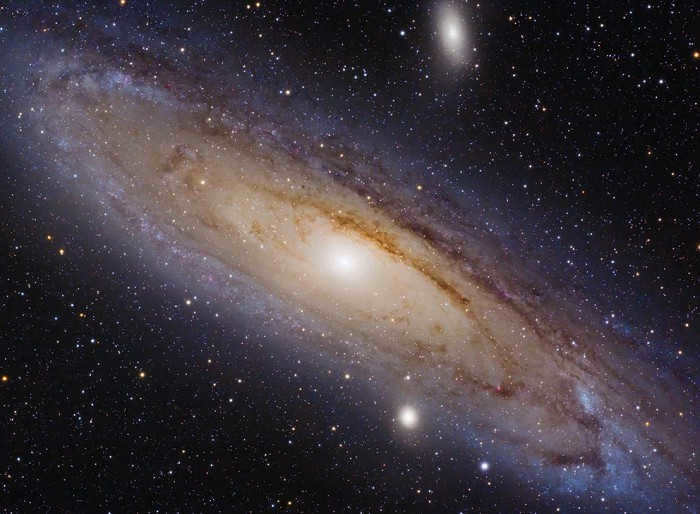
The Andromeda Galaxy, also known as Messier object 31 or M31, is much larger than our own Milky Way. However, it is not the largest galaxy that we know of.
What do galaxies look like?
Galaxies come in various shapes and sizes, and scientists classify them into three main categories based on their shape: spiral, elliptical (oval), and irregular (shapeless).
Elliptical galaxies

These galaxies are called elliptical because they have an elliptical shape, which is a distorted circle. Elliptical galaxies are usually round, but they have a slightly longer dimension in one direction compared to the other. The majority of galaxies in the cosmos have an elliptical shape.
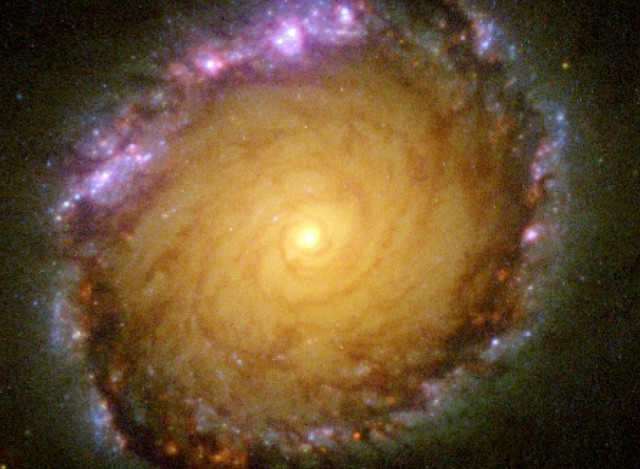
Irregular galaxies are characterized by their flat, rounded clusters of stars, which are accompanied by spiral “tails” or arms that branch off from a dense center. These galaxies, which are the second most common type, have a unique and distinct appearance.
Types of galaxies
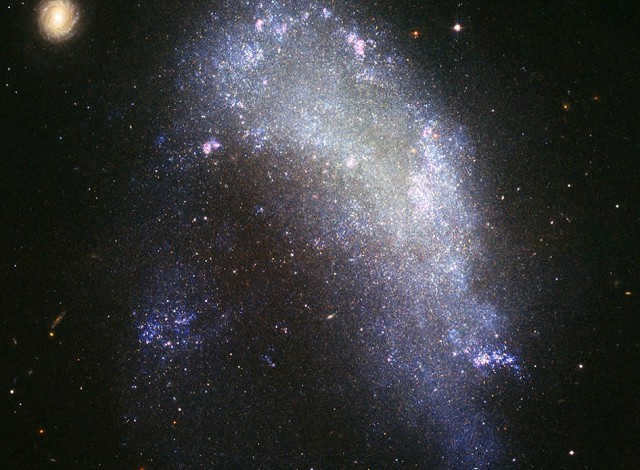
Irregular galaxies lack a distinct form. Scientists theorize that these galaxies are the product of galactic collisions or when the shape of a galaxy alters as a result of the gravitational pull exerted by a neighboring galaxy.
“Dark” galaxies
There is an enormous quantity of galaxies in the Universe that possess a minimal amount or absence of stellar bodies. These celestial objects consist primarily of a substance known as dark matter, giving them the label of “dark galaxies”.
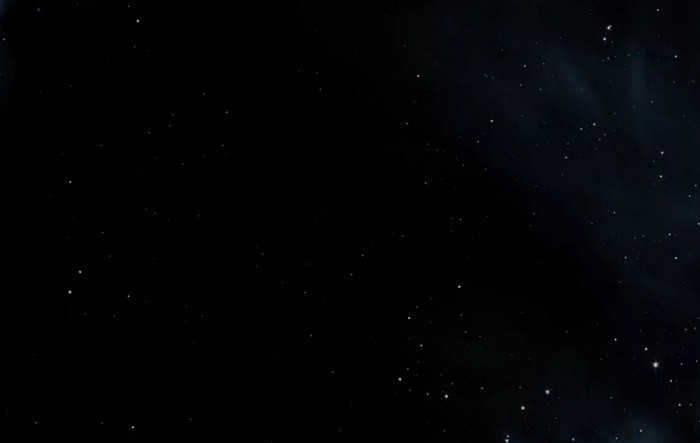
It is possible that there are actually numerous galaxies like this, exceeding the number of ordinary galaxies with luminous stars and illuminating gas. Moreover, luminous galaxies also possess substantial quantities of dark matter, often amounting to 10 times the mass of all the stars in the galaxy.
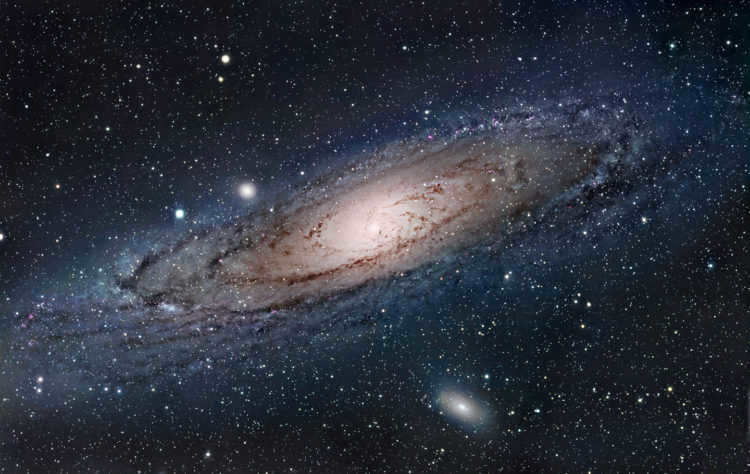
- Galaxies
Milky Way
The Milky Way galaxy, also known as the Galaxy, is a massive spiral galaxy that measures approximately 30 kiloparsecs (or 100,000 light-years) across and is 1,000 light-years thick (up to 3,000 in the bulge region). Our solar system, including the Sun, resides within the galactic disk that is filled with light-absorbing dust. As a result, when we observe the night sky, we see a band of stars that resembles a milky streak. Due to this light absorption, there are still many aspects of the Milky Way that remain unexplored, such as the construction of its rotation curve, the complete determination of its morphological type, and the exact number of spiral arms it possesses. The galaxy is estimated to contain approximately 3-1011 stars, and its total mass is around 3-1012 solar masses.
Studies of star clusters play a significant role in the exploration of the Milky Way. These clusters, which consist of hundreds to hundreds of thousands of stars, are relatively small and gravitationally bound. Their gravitational connection is likely due to a shared origin. By analyzing the location of the stars within a cluster on the Hertzsprung-Russell diagram and applying the theory of stellar evolution, scientists can estimate the cluster’s age. Star clusters can be categorized as scattered or globular clusters.
- Globular clusters, which have a spherical shape and are concentrated towards the center of the Galaxy, are ancient star clusters. Some individual globular clusters may be more than 12 billion years old.
- Scattered clusters, which can be up to 2 billion years old, consist of relatively young stars that are still undergoing the process of star formation. The brightest stars in these clusters are young stars of spectral classes B or A, and the youngest clusters even contain blue supergiants of class O.
Star clusters, due to their relatively small sizes compared to cosmological scales, can only be directly observed in the Galaxy and its closest neighboring galaxies.
Double stars, another type of objects that can only be observed in the vicinity of the Sun, are also of great importance for studying various processes occurring in the galaxy. They allow for determining the mass of stars and studying accretion processes. Additionally, novae and Type Ia supernovae are the result of interactions between stars in close binary systems.
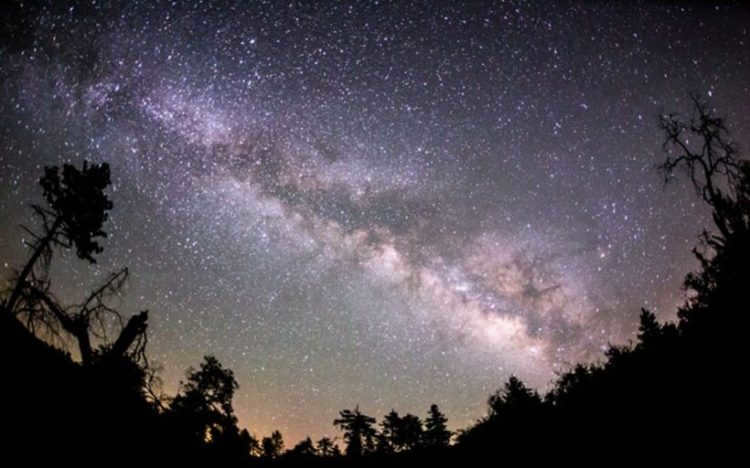
Let’s begin with the weight of the Milky Way. The Milky Way is so massive that we will assign it its own weight measurement, which is quite substantial in itself: the weight of the Sun. If we factor in all of the stars, dust, gas, and an immense quantity of dark matter that envelop our galaxy in a halo, the total weight would be approximately 3 trillion solar masses, according to the most recent estimations at the time of writing. Previous calculations have placed the figure at over 1 trillion solar masses. Dark matter makes up roughly 90% of this weight, signifying that it is matter that challenges the force of gravity.
It is a fact that the Milky Way is not solely composed of dark matter – it also contains a significant amount of dust, gas, and stars that fill up the vastness of galactic space. Scientists estimate that there are approximately 200 to 400 billion stars within the Milky Way, although only a small fraction of these stars, around 5,000 to 8,000, can be seen with the naked eye. Furthermore, from Earth, we can only observe about 2,500 stars at any given time.
The Milky Way is an immense disk that stretches across a diameter of approximately 100,000 to 120,000 light years. The majority of this disk is about 1,000 light-years thick. However, situated at its center, there is a spherical bulge that spans 12,000 light-years in diameter. To visualize these proportions, one could imagine a stack of DVDs with a rubber ball firmly affixed in the middle.
The organization of our galaxy
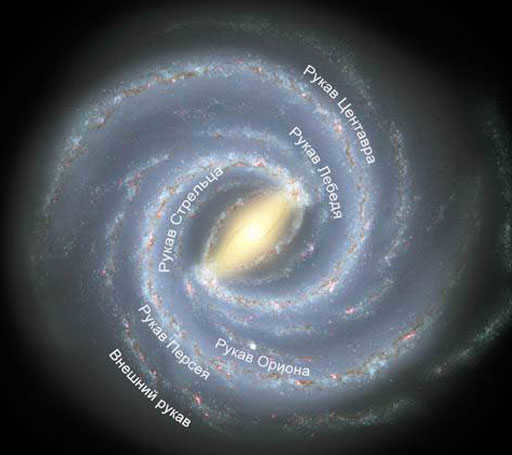
The Milky Way, our galaxy, possesses a unique shape consisting of a spiral disk with four intertwined arms and a dense central core. Spanning a thickness of approximately 500 sv. years, the disk takes an immense amount of time for light to traverse. The arms themselves extend outward for a radius of about 50,000 sv. years. At the center of the Milky Way lies a thickening that spans 3,000 sv. years in diameter and is surrounded by a collection of roughly 200 globular star clusters, often referred to as a halo.
The dark stripe visible at night along the Milky Way (and in images of other galaxies) signifies the presence of immense gas and dust clouds in interstellar space within our Galaxy. These clouds absorb visible light but are transparent to radio waves and infrared radiation. Through the use of radio astronomy and infrared satellite observations, scientists have determined that our galaxy possesses a four-arm structure and that the Sun is positioned approximately 25,000 light-years away from the central region. Over the course of approximately 200 million years, the Sun completes one revolution around the center of the Galaxy, which means it has circled the Milky Way approximately 25 times throughout its lifetime. In metaphorical terms, we can say that the Sun is 25 galactic years old!
In the heart of our Milky Way galaxy, scientists have detected a source emitting an incredibly high amount of energy. Despite its relatively small size (comparable to the solar system), this source has a mass one million times greater than our Sun and emits radiation that is 100 million times more intense. Initially, it was believed that this source was caused by a burst of star formation from young stars. However, the prevailing theory now suggests that it is actually a black hole that formed at the center of our galaxy.
Latest Study

According to recent findings from the Hubble telescope’s spectrograph, astronomers, led by John Stock from the University of Boulder, Colorado, suggest that the size of halo galaxies, similar to the Milky Way, needs to be reconsidered. This implies a reevaluation of their masses.
Previously, the estimated size of our galaxy’s disk was about 100,000 light years, with the halo extending an additional ten thousand light years. However, new measurements reveal that the halo’s diameter exceeds 1 million light years, making it ten times larger than the Milky Way’s disk alone. In terms of kilometers, this would be approximately ten quintillion.
The gas and dust in the outer regions of the galaxy likely underwent displacement due to supernova explosions, but they are now being drawn back towards us and contributing to the formation of celestial objects within the galactic disk.
Utilizing existing research on the composition and density of gas within the Milky Way, astronomers propose that the mass of these newly discovered reservoirs of cosmic building material is approximately equivalent to the mass of all the stars within a typical medium-sized spiral galaxy, such as our own. According to John Stock, this revelation has left scientists astounded.
A conference held at the University of Edinburgh on June 27 this year featured a special report on the research conducted by John Stock’s team of astronomers.
As mentioned earlier, there are astronomical observations suggesting that our galaxy’s size could be approximately 1 million light years, which is 10 times larger than the currently accepted size. This claim is supported by the analysis of the galaxy’s halo’s gas and dust content, as well as the examination of stars’ velocities in the galaxy’s disk. Additionally, the presence of stars in our galaxy with orbits extending hundreds of thousands of light years away provides further evidence. For instance, an article on the Hi-News website describes two gas giants located at a distance of 850-900 thousand light years from the galaxy’s center.
It is mentioned in the report titled “On the Dimensions of Gravitospheres of Massive Celestial Bodies” that the size of our Milky Way galaxy can expand up to a million light years, including its gravitosphere. According to the report, the gravitosphere of our galaxy has the potential to extend several million light years from its central region.
The gravitosphere is a genuine physical medium possessing real physical characteristics, such as density, which is directly proportional to g=G*M/R^2.
Considering the immense size of the gravitosphere of the Galaxy, it can make a significant contribution to the overall mass of our galaxy, even at a relatively low density. If we consider a sphere with a radius of 1 million light years and an average density of 10^(-27) g/cm^3, the total mass of the gravitosphere of our galaxy would amount to approximately 10^12 solar masses.
As demonstrated in the aforementioned data, the combined weight of gas and dust in the halo surrounding our galaxy is roughly equivalent. Additionally, a recent study conducted by Canadian astrophysicists suggests that our galaxy may span up to a million light-years in size and contain a mass of 10^12 solar masses.
On January 16, 2017, these astrophysicists published a paper which includes a graph (Figure 3) depicting the distribution of our galaxy’s mass in relation to its distance from the center. This graph reveals that as the distance from the center increases, so does the mass of the Milky Way galaxy. At a distance of 500,000 light-years from the center, the mass reaches approximately 7*10^11 solar masses. Furthermore, the shape of the galaxy’s mass curve indicates that the mass could continue to increase. By extrapolating the graph to a distance of 1 million light-years from the center, the Canadian astrophysicists determined that the galaxy’s mass would be around 10^12 solar masses.
A fascinating inclusion
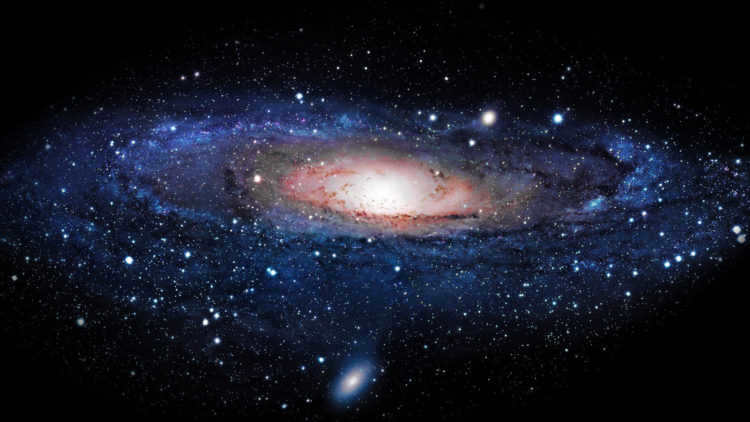
As depicted in the image, the mass of all material within the Sun’s orbit, which has a radius of approximately 25,000 light years, is equivalent to 10^11 solar masses. Consequently, if we assume that the condition M/R = const is met, the mass of all matter in the visible (luminous) section of our galaxy, which spans a radius of about 50,000 light years, will amount to 2*10^11 solar masses.
Remarkably, this is five times less than the total mass of the Galaxy, which, as previously mentioned, can reach up to 10^12 solar masses. Hence, it is plausible that the majority of the Galaxy’s mass resides within its halo, stretching approximately 10^6 light years in radius.
The gravitosphere of a massive object is a layered medium that has a density gradient. The density of the gravitosphere is directly proportional to the acceleration of free fall at a specific point within the gravitosphere: g = G*M/R^2. The gravitospheric density of a massive object is directly proportional to its mass and inversely proportional to the square of the distance between a specific point and the center of mass of the object.
As a result, the density of the gravitosphere of the Galaxy will decrease in proportion to R^2 as it moves away from the center, and the volume of the gravitosphere will increase in proportion to R^3. This implies that the mass of the Galaxy’s gravitosphere will increase proportionally to R as it moves away from the center of the Galaxy, and the condition of constant velocity of stars in the Galaxy (M/R = const) will be perfectly satisfied.
Therefore, the consistent velocity of stars within galaxies can be easily and organically accounted for by the existence of gravitospheres in galaxies, just like in all other massive celestial bodies in the Universe.
These gravitospheres within galaxies may actually be the elusive “dark matter” that was initially proposed in physics to explain the observed constant velocity of stars within galaxies, but whose properties and physical characteristics are still unknown.
As mentioned previously, an abundance of data, including astronomical observations, suggests that the Milky Way galaxy potentially possesses a mass of 10^12 solar masses and spans a radius of 1 million light years. This scale far surpasses the visible (luminous) section of the Galaxy, which measures approximately 100,000 light years in size. The Universe experiences three primary physical processes—condensation, conversion, and matter generation—which result in the formation of extensive gas clouds within the Galaxy’s halo. These gas clouds subsequently gravitate towards the Galaxy’s center, instigating the creation of gas and dust flows.
As these streams of gas and dust progress towards the galactic nucleus, their density progressively intensifies. Consequently, gas and dust condense into stars and planets, with this process gradually diminishing as one approaches the center of the galaxy.
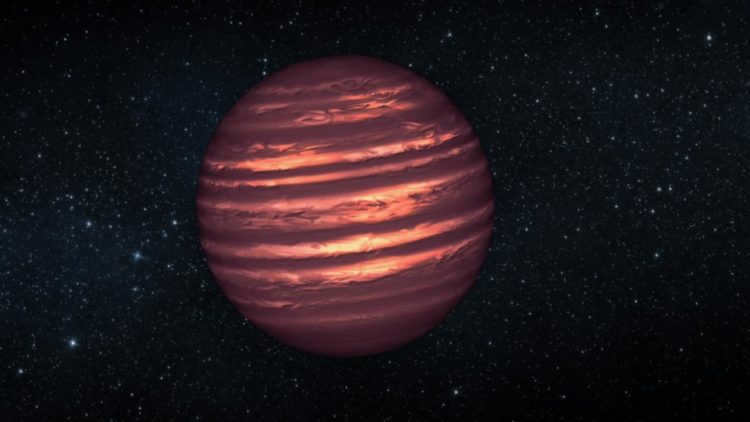
Therefore, beyond the observable (luminous) section of the galaxy, within its halo, there might exist a vast assortment of “dark” massive entities. These entities could potentially encompass dark stars like brown dwarfs, as well as protostars and protoplanets that develop as gas-dust matter accumulates while transitioning from the depths of the galaxy to its core.
For instance, the article titled “The Milky Way May Contain Approximately 100 Billion Brown Dwarfs” discusses a recent study indicating that our galaxy may harbor a colossal quantity of brown dwarfs, which could be estimated at around 100 billion.
Due to their low mass, brown dwarfs are unable to generate significant amounts of energy, resulting in relatively low temperatures and poor glow. Conventional methods for detecting these stars pose challenges. Additionally, the visible portion of this vast population of brown dwarfs, which numbers around 100 billion, can be likened to the tip of an iceberg, while the invisible portion consists of numerous smaller and colder bodies.
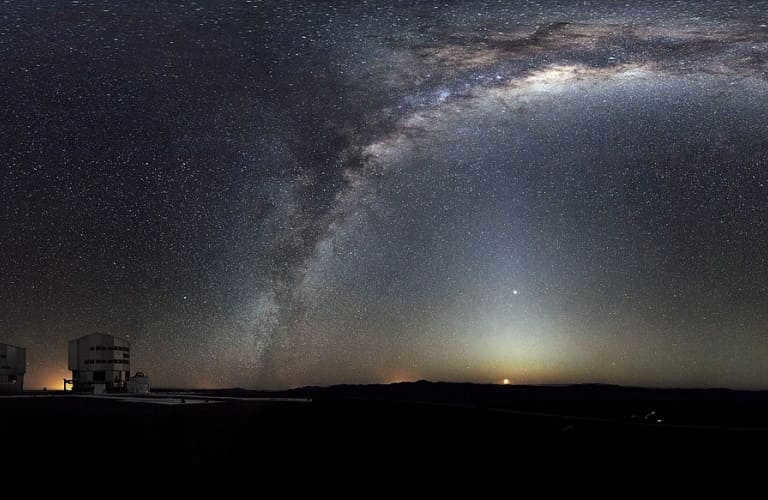
Short answer: A galaxy is a vast collection of gas, dust, and billions of stars and their solar systems that are bound together by the force of gravity. There are more than 100 billion galaxies in the universe, each of which possesses stunning structures that can be observed in photographs of the distant cosmos captured by telescopes.
We inhabit the planet Earth, which exists within our solar system. However, where exactly is our solar system located? It occupies a minuscule fraction of the Milky Way galaxy.
Galaxies comprise numerous stars and other celestial bodies that are united by the influence of gravity. At the heart of our Milky Way galaxy lies a supermassive black hole.
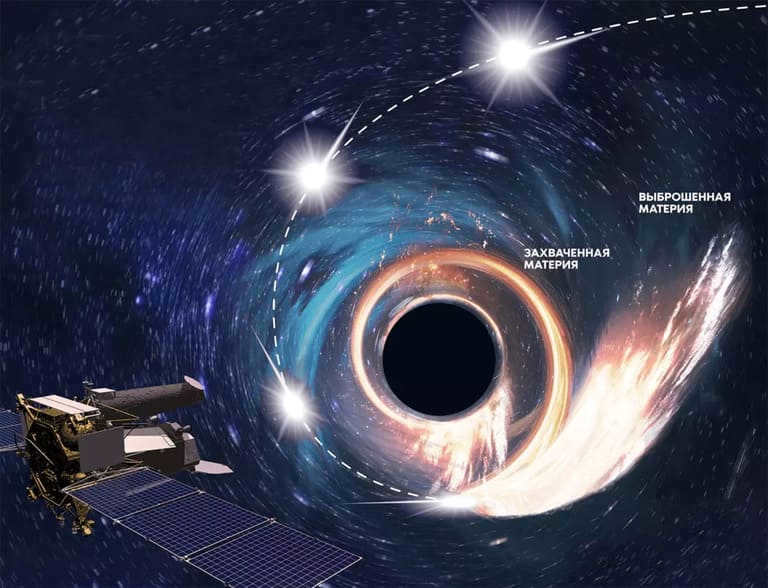
The Milky Way is a massive spiral galaxy that holds between 100 and 400 billion stars. It appears as a luminous band in the night sky, resembling spilled milk, hence its name. The ancient Romans called it Via Lactea, which translates to “Milky Way” in Latin. Milky Way..

However, our galaxy is not the only one in existence. There are numerous other galaxies that are yet to be discovered. The Hubble Space Telescope conducted a 12-day observation of a small section of space and identified 10,000 galaxies of various sizes, shapes, and colors. Some experts speculate that the total number of galaxies in the universe may exceed 100 billion.
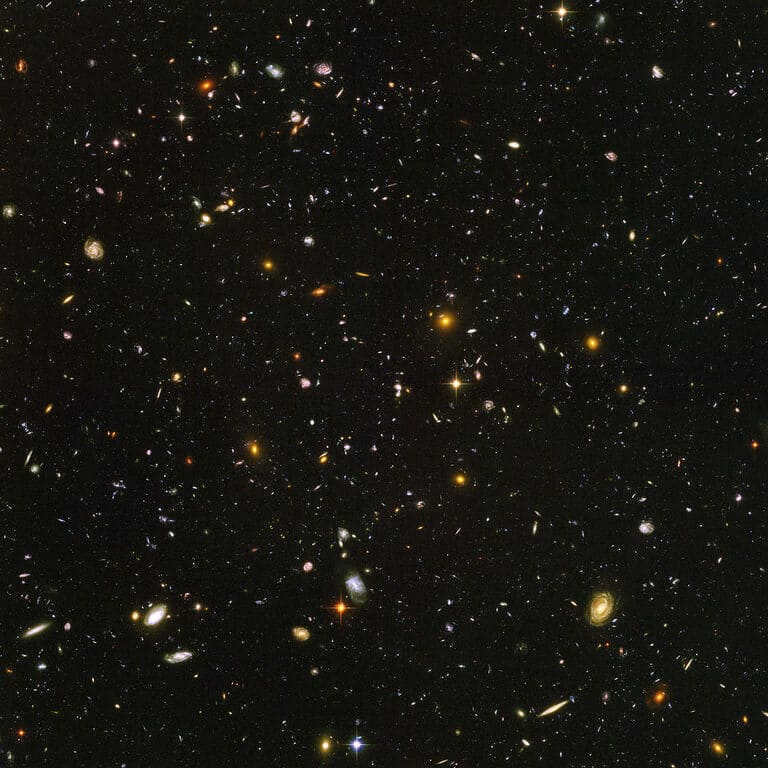
- Many galaxies have a spiral structure similar to our own.
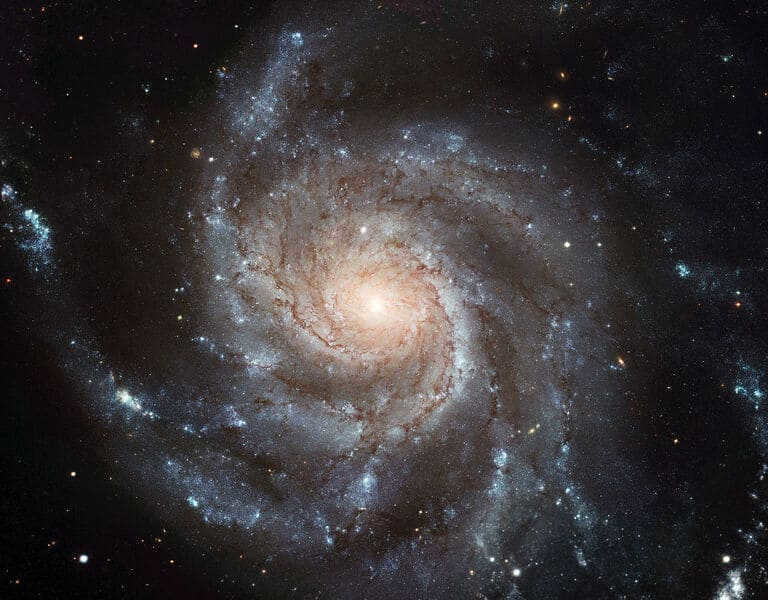
- Elliptical galaxies, which are also known as smooth oval-shaped galaxies, can be found in other galaxies.
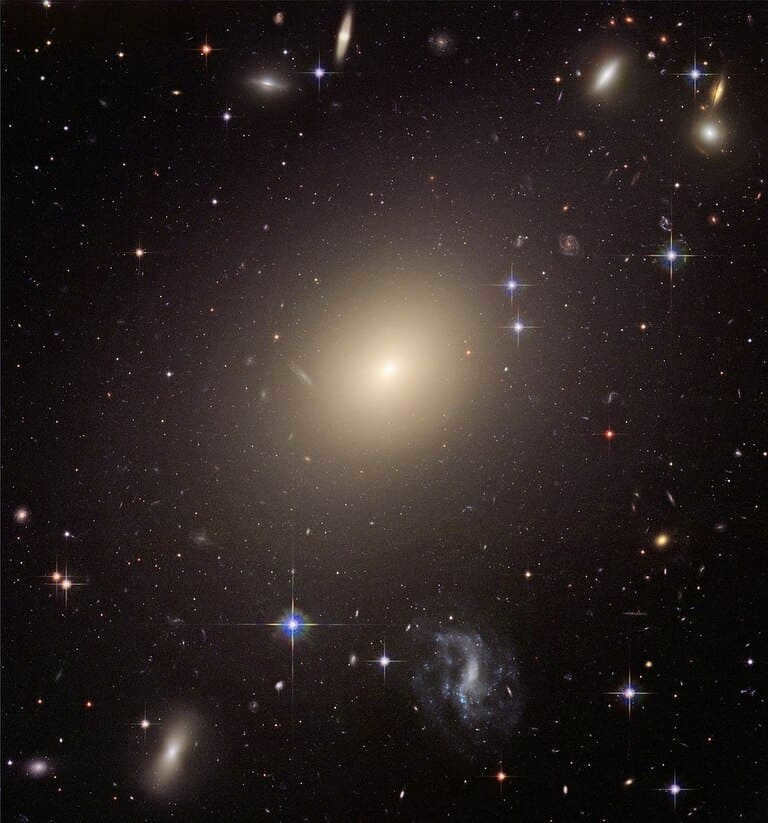
- Not only spirals and ovals, but there are also galaxies with irregular shapes that resemble blobs.

- The light that we observe from these galaxies originates from the stars contained within them.
Occasionally, galaxies come too close to each other and collide. In the future, our Milky Way galaxy will collide with Andromeda, which is our closest galactic neighbor.
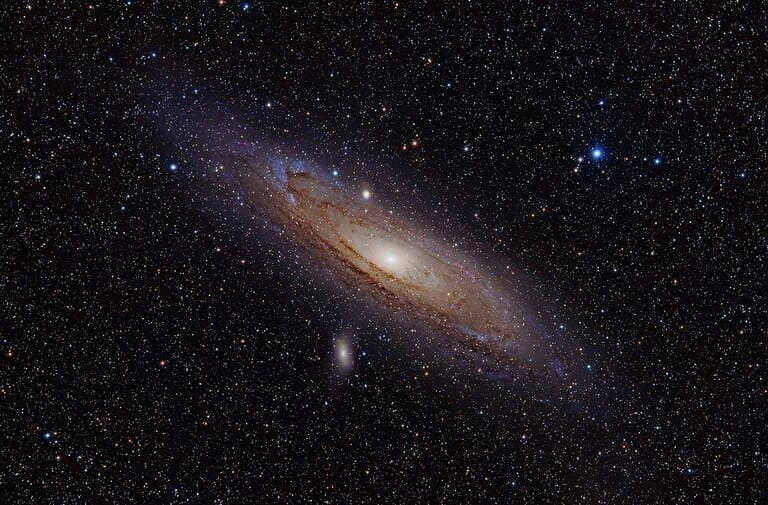
However, rest assured that this occurrence is not expected for approximately 5 billion years. Furthermore, even if it were to happen in the near future, it is unlikely that you would be aware of it. The vast size and distribution of galaxies means that even when they collide, the chances of planets and solar systems colliding are relatively low.
Related Articles

Discover 40 Fascinating Facts about Earth’s Untamed Creatures

05/10/2021
Enhance Your Vision with a Fascinating Optical Illusion

On April 16, 2019, an article titled “14 accidental inventions that changed the world” was published.

October 14, 2018
6 game-changing technological advancements that will revolutionize the way we live


28/02/2018
Imagine a scenario where the Earth suddenly loses all its oxygen for just 5 seconds. What would happen? It’s a terrifying thought, but it’s worth exploring the potential consequences.

On February 7, 2022, an interesting article was published discussing the various scientific theories about the end of the world. The article explores the top 10 theories and provides a brief overview of each one. It’s a fascinating read for anyone interested in the future of our planet and the potential threats that could bring about its demise. From asteroid impacts to nuclear warfare, the article covers a wide range of possibilities and presents the scientific evidence behind each theory. Whether you’re a science enthusiast or just curious about what the future holds, this article is definitely worth checking out.

For centuries, people have been fascinated by the celestial sky. Scholars from all over the world have attempted to understand our position in the vast Universe and to conceptualize its composition. Thanks to scientific advancements, we have transitioned from romantic and spiritual interpretations to logically substantiated theories supported by extensive empirical evidence. Today, even young students can grasp the latest understanding of our Milky Way Galaxy, including its origins, the rationale behind its evocative name, and its projected destiny.
Etymology of the Name
The term “Milky Way Galaxy” is essentially a redundancy. The word “Galactikos” in ancient Greek roughly translates to “milky”. This is how the people of the Peloponnese referred to the group of stars in the night sky, believing it to have originated from the passionate Hera: the goddess, in her anger, spilled breast milk after refusing to feed Heracles, Zeus’ illegitimate son. These droplets formed a path of stars that can be seen on clear nights. Centuries later, scientists discovered that the stars they observed were only a small fraction of the countless celestial bodies that exist. They named the region of the universe where our planet resides the Galaxy or the Milky Way system. Once the existence of similar formations in space was confirmed, the term became universal for them all.
A sneak peek from within
Our knowledge of the structure of the portion of the universe encompassing the solar system has not been heavily influenced by ancient Greek teachings. The understanding of the appearance of our galaxy has progressed from Aristotle’s depiction of a spherical universe to modern theories that encompass black holes and dark matter.
The fact that Earth is a component of the Milky Way system imposes certain limitations on our ability to determine the shape of our galaxy. A definitive answer to this question necessitates an external perspective, from a significant distance away from the object of study. Currently, science lacks this capability. As a substitute for an external observer, scientists rely on gathering data about the structure of the galaxy and comparing it with the parameters of other cosmic systems that are available for examination.
Based on the data we have gathered, we can confidently state that our Milky Way galaxy is shaped like a disk with a bulge in the middle and spiral arms emanating from the center. These spiral arms are home to the most luminous stars in the entire system. The diameter of this disk exceeds 100,000 light-years.
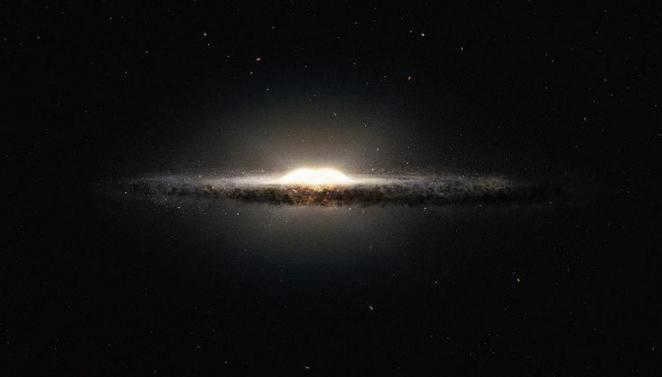
Composition
The structure of our Galaxy is obscured by interstellar dust, making it challenging to study. However, radio astronomy techniques have helped overcome this obstacle, allowing us to obtain valuable images. Our Galaxy is known to have a complex composition.
Essentially, there are two components that are interconnected: the halo and the disk proper.
The first component can be described as follows:
- It has a spherical shape;
- The center is referred to as the bulge;
- The region of the galaxy experiences a relatively slow rotation;
- The majority of stars in the halo have small masses and are older;
- A significant portion of the subsystem is occupied by dark matter.
In terms of stellar density, the galactic disk surpasses the halo in size. The arms of the galaxy contain young and newly forming celestial objects.
The hub and the essence
The focal point of the Milky Way can be found within the Sagittarius constellation. To gain a comprehensive understanding of our galaxy, it is imperative to delve into this central region. In scientific literature, the term “nucleus” is often used to solely describe the core area, which spans only a few parsecs. Alternatively, it may encompass both a bulge and a gas ring, where new stars are believed to originate. For the purpose of this discussion, we will adopt the former interpretation of the term.
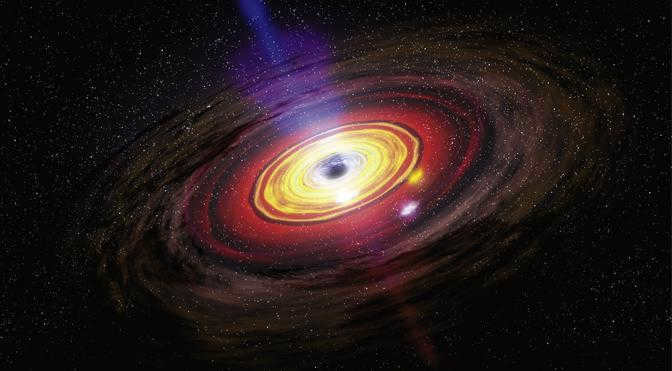
Our Galaxy’s appearance is obscured by a vast amount of cosmic dust, making it challenging for visible light to penetrate. However, astronomers have gained valuable insights into the core by studying photos and images captured in the infrared spectrum.
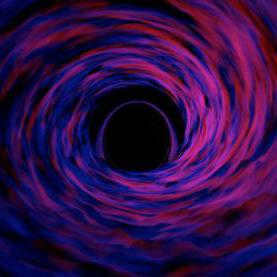
Scientific observations have provided data indicating the presence of a black hole in the core of our Galaxy. This black hole is estimated to have a mass more than 2.5 million times that of the Sun. Researchers also believe that there is another black hole spinning around this central object, although it is smaller in size. These findings align with current understanding of the structure of galaxies, which suggests that many galaxies have similar black holes in their central regions.
Light versus Darkness
The collective influence of black holes on the movement of stars has its own impact on the appearance of our Galaxy: it results in distinct alterations in the orbits, which are not typical for celestial bodies, especially in the vicinity of the solar system. The examination of these trajectories and the correlation between velocity and distance from the center of the Galaxy served as the foundation for the development of the theory of dark matter, which is currently undergoing intense research. The true nature of dark matter still remains an enigma. The presence of dark matter, believed to constitute the majority of all matter in the Universe, can only be detected through the gravitational effect it exerts on orbits.
Space enthusiast
An extensive infrared image has revealed a fascinating structure at the heart of our Galaxy when observed in the long-wavelength spectrum. Surprisingly, the core of our Galaxy resembles a peanut enclosed in a shell. This intriguing “peanut” formation includes over 20 million red giants, which are stars that are bright but not as hot.
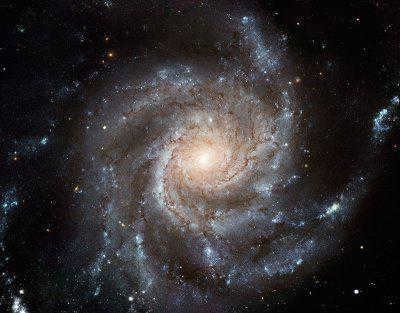
The spiral arms of the Milky Way extend outwards from the ends of the bar.
Discovering the “peanut” at the center of the star system not only provided insight into the structure of our Galaxy, but also enhanced our understanding of its evolution. Initially, there was a regular disk in space, which eventually formed a lintel. Through internal processes, the bar underwent changes in shape and resembled a walnut.
Our position in the vast universe
The Milky Way, our home galaxy, showcases active star formation in two distinct regions – the lintel and the spiral arms. These arms were named after the constellations where their branching sections were discovered: Perseus, Swan, Centaurus, Sagittarius, and Orion. It is in the vicinity of the Orion arm, located at a minimum distance of 28 thousand light years from the galactic center, where our Solar System resides. This particular region possesses unique characteristics that, according to experts, have played a crucial role in enabling the emergence of life on Earth.
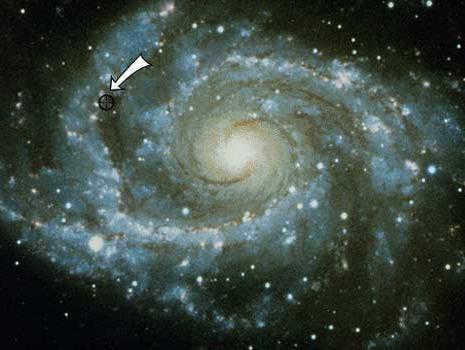
The galaxy in which our solar system resides is in constant motion, with its individual components following different laws of motion. Periodically, a large number of stars move into the spiral branches and then separate from them. However, there are certain stars, like the Sun, that remain on the boundary of the corotational circle and do not undergo these journeys. This position provides protection from the powerful processes occurring in the arms of the galaxy. The Sun’s stable position is crucial for the development of organisms on our planet, as even a slight shift would eliminate the favorable conditions it provides.
The Sun is just one of numerous celestial bodies that exist within our galaxy. There are over 400 billion stars in total, whether they are solitary or grouped together, according to recent data. Proxima Centauri, the nearest star to us, is part of a trinary star system that includes the slightly more distant Alpha Centauri A and Alpha Centauri B. The most prominent object in the night sky, Sirius A, can be found in the constellation Canis Major, also known as the Great Dog. Its luminosity is estimated to be 17 to 23 times greater than that of the Sun. Sirius is not alone in its vicinity, as it is accompanied by a companion star with a similar name, designated as Sirius B.
Children frequently start to acquaint themselves with the appearance of our Galaxy by searching for Polaris or Alpha Minor Bear in the sky. Its popularity is due to its position above the North Pole of the Earth. In terms of brightness, Polaris surpasses Sirius (being almost two thousand times brighter than the Sun), but it cannot contest the title of the brightest star with Alpha Canis Majoris due to its distance from Earth (estimated to be between 300 and 465 light-years).
Categories of celestial bodies
Celestial bodies vary not only in their brightness and distance from the observer. Each celestial body is assigned a specific magnitude (with the corresponding solar parameter as a reference), surface heating level, and color.
The most impressive sizes are found in supergiants. Neutron stars, on the other hand, have the highest concentration of matter per unit volume. The color of a celestial body is closely related to its temperature:
- Red celestial bodies are the coldest;
- Celestial bodies with a surface heating level of 6,000º, similar to that of the Sun, have a yellowish hue;
- White and blue celestial bodies have temperatures over 10,000º.
The brightness of a star can change and reach its peak just before it collapses. Supernova explosions provide valuable insights into the appearance of our Galaxy. The photographs taken by telescopes during this phenomenon are truly remarkable. The information gathered from these images has been instrumental in reconstructing the sequence of events that led to the eruption and in forecasting the destiny of several celestial objects.
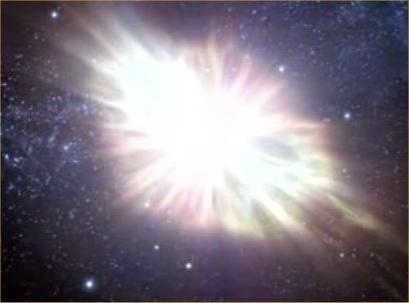

The future of the Milky Way
Astronomers have determined that the Milky Way, along with other galaxies, is constantly in motion and interacting with its surroundings. Throughout its history, the Milky Way has merged with neighboring galaxies multiple times, and this process is expected to continue in the future. In time, it will assimilate the Magellanic Cloud and several other smaller systems. However, the most significant event is projected to occur in approximately 3-5 billion years when the Milky Way will collide with the Andromeda Nebula, the only neighboring galaxy visible to the naked eye from Earth. As a result of this collision, the Milky Way will transform into an elliptical galaxy.

